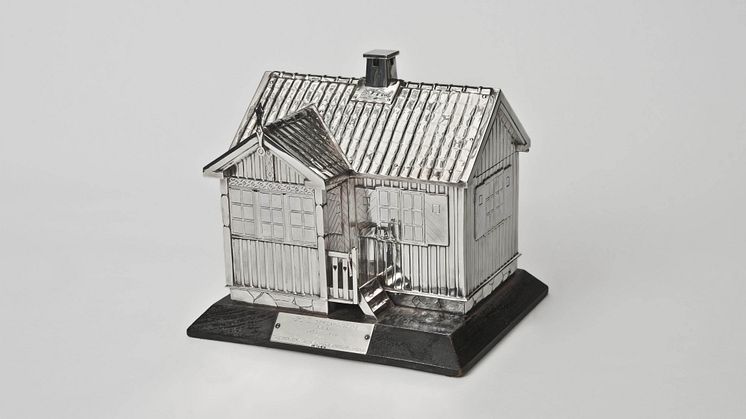
Press release -
The exhibition The Joy of Giving opens at Nationalmuseum 5 July
Nationalmuseum’s collections include many exquisite, representative examples of Swedish and European silver from the 16th century to the present day. This unique collection has come about partly as a result of many generous donations and financial contributions received over the years. The exhibition The Joy of Giving presents some 80 gifts received by the museum in recent decades.
The objects presented in the exhibition range from magnificent baroque and gracious rococo pieces to modern silver from the decades around the turn of the millennium. There are tankards, bowls, jewellery, candlesticks, vases and goblets – all of them silver. The museum has many generous donors, and we have selected a number of them to feature in the exhibition. They include dedicated collectors, art lovers who have kindly supported our work through regular or one-off donations, and artists who have wanted to share their life’s work with a wider audience. The common denominator is silver.
The pieces on display were donated by Gunnar V. Philipson, Sverker Åström, the Märta Christina and Magnus Vahlquist Foundation, Anna Atterling, Kerstin Öhlin Lejonklou, the Barbro Osher Pro Suecia Foundation, the Bengt Julin Fund, and the Ulf Gillberg–Lennart Agerberg Foundation. Many of these donors provided their gifts via the Friends of Nationalmuseum. These have been highly significant for our possibilities of acquiring older and contemporary silver pieces, as the museum receives no state funds for acquisitions, instead relying on donations and gifts from private foundations and trusts.
The exhibition The Joy of Giving – silver donations is on show 5 July 2023 until 23 June 2024 in the Focus Gallery, a gallery space adjacent to the Treasury designed for smaller-scale, in-depth presentations of featured works from the collections. The exhibition curator is Micael Ernstell, Nationalmuseum.
Media contact
Hanna Tottmar, head of press, press@nationalmuseum.se, +46 8 5195 4400
Categories
Nationalmuseum is Sweden’s museum of art and design. The collections comprise some 700 000 objects, including paintings, sculpture, drawings and graphic art from the 16th century up to the beginning of the 20th century and the collection of applied art and design up to the present day. Nationalmuseum is a government authority with a mandate to preserve cultural heritage and promote art, interest in art and knowledge of art.

